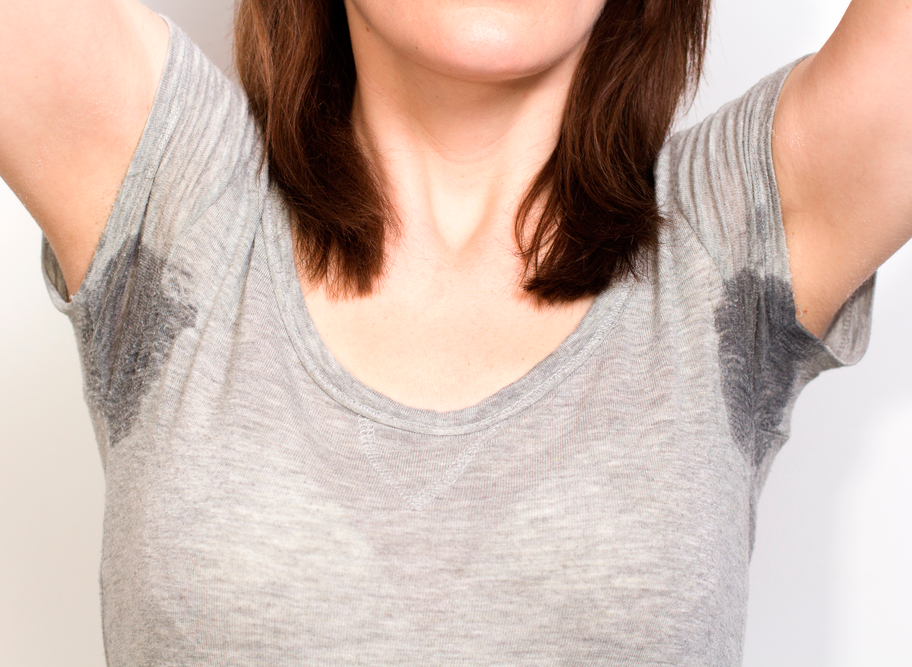Diabetes can disrupt normal sweating patterns due to nerve damage, a condition known as diabetic neuropathy, which results from prolonged fluctuations in blood sugar levels. This damage can lead to a range of uncomfortable symptoms, including numbness, tingling, pain, and muscle weakness, primarily in the hands and feet. However, its effects extend beyond these areas, impacting sweat gland function and overall body temperature regulation.
“Nerves are essential for controlling internal organs, including the sweat glands in the skin,” explains Dr. Calvin Wu, an endocrinologist with Tono Health in the San Francisco Bay Area. “Prolonged high blood sugar can impair the nerves responsible for signaling sweat production, leading to irregular sweating patterns.”
When nerve damage occurs, it disrupts the body’s ability to regulate sweat. Some individuals may experience reduced sweating—or none at all—in specific areas due to the lack of proper nerve stimulation. This can make it difficult for the body to cool itself effectively, increasing the risk of overheating.
On the other hand, low blood sugar (hypoglycemia) can trigger the body’s fight-or-flight response, releasing stress hormones such as adrenaline. This surge in hormones can lead to excessive sweating, particularly in the upper body, as the body attempts to counteract the sudden drop in blood sugar. These episodes of hypoglycemia-induced sweating are typically short-term but can be distressing and may indicate an urgent need to stabilize blood sugar levels.
For individuals with diabetes, managing blood sugar levels is key to preventing these irregular sweating patterns. Proper blood glucose control can help minimize nerve damage progression, reduce discomfort, and maintain better autonomic nervous system function, which plays a critical role in sweat regulation and overall temperature control.
Types of Sweating Issues Linked to Diabetes
Diabetes-related nerve damage, known as diabetic neuropathy, can disrupt the body’s ability to regulate sweat, leading to both excessive sweating (hyperhidrosis) and reduced sweating (anhidrosis). These imbalances can significantly impact comfort, body temperature regulation, and overall well-being. Below are the most common types of sweating disorders linked to diabetes:
Hyperhidrosis – Excessive Sweating
Hyperhidrosis occurs when the sweat glands become overactive, leading to excessive moisture production even when the body doesn’t need cooling. This condition can be triggered by stress, heat, exercise, or even food. It is classified into two main types:
- Primary focal hyperhidrosis – A genetic condition that typically begins before age 25 and primarily affects the palms, feet, underarms, and face.
- Secondary generalized hyperhidrosis – Excessive sweating caused by an underlying health condition, such as diabetes or hormonal imbalances.
Common areas affected: Hands, underarms, feet, forehead, cheeks, and lower back.
Anhidrosis – Reduced or Absent Sweating
Also known as hypohidrosis, anhidrosis occurs when the sweat glands fail to produce enough sweat, which can prevent the body from cooling down properly. This condition is another potential consequence of diabetic neuropathy and can lead to dizziness, muscle cramps, weakness, and even heatstroke if not managed properly. If you notice a lack of sweating during hot weather or intense activity, consult a doctor immediately.
Night Sweats – Excessive Sweating During Sleep
Night sweats are common in people with diabetes, particularly when blood sugar drops too low (hypoglycemia) during sleep. This can lead to profuse sweating, soaked clothing or bedding, chills, headaches, nausea, dizziness, increased thirst, and frequent urination.
Dr. Calvin Wu, endocrinologist at Tono Health, explains:
“Night sweats often result from overnight hypoglycemia, especially in individuals using insulin or glucose-lowering medications.”
Using a Continuous Glucose Monitor (CGM) can help track blood sugar levels and prevent sudden dips, reducing the chances of waking up drenched in sweat.
Gustatory Sweating – Sweating Triggered by Eating
Also known as Frey’s syndrome, gustatory sweating occurs when eating—or even thinking about food—triggers excessive sweating, especially around the face, neck, temples, or near the ears. It is commonly seen in people with diabetic neuropathy and is often exacerbated by spicy or fatty foods.
Treatment Options for Diabetes-Related Sweating
If excessive or reduced sweating is affecting your daily life, several treatments can help alleviate discomfort and improve quality of life:
Medical Treatments
- Prescription Antiperspirants – Contain aluminum chloride, which blocks sweat glands to reduce excessive sweating.
- Anticholinergic Medications – Oxybutynin and glycopyrrolate can help reduce sweating by blocking nerve signals but may cause side effects like dry mouth or blurred vision.
- Botox Injections – Temporarily blocks the nerves responsible for activating sweat glands, significantly reducing sweating.
- Topical Glycopyrronium – Wipes or creams applied to the skin to reduce excessive sweating, particularly in the underarms.
- Iontophoresis – A non-invasive treatment using low electrical currents to temporarily disable sweat glands, primarily for hands and feet.
Lifestyle Adjustments to Manage Sweating
Beyond medical interventions, lifestyle changes can play a crucial role in controlling diabetes-related sweating issues:
1. Maintain Stable Blood Sugar Levels
Regularly monitor your glucose levels to prevent spikes or drops that can trigger sweating episodes. Staying within your target range can reduce diabetic neuropathy progression and associated symptoms.
2. Optimize Your Diet
- Avoid sugary and processed foods that cause blood sugar fluctuations.
- Incorporate hydrating foods like cucumbers, strawberries, and water-rich vegetables.
- Reduce spicy, fatty, and caffeine-heavy foods, as they can trigger gustatory sweating.
3. Exercise Wisely
Engage in low- to moderate-intensity exercise, such as walking or swimming, to regulate blood sugar and improve circulation. Avoid intense workouts in extreme heat, especially if you experience anhidrosis.
4. Manage Stress & Anxiety
Stress can worsen hyperhidrosis. Implement relaxation techniques such as:
- Meditation
- Deep breathing exercises
- Yoga or stretching routines
Conclusion
Diabetes-related sweating irregularities—whether excessive sweating (hyperhidrosis) or reduced sweating (anhidrosis)—are often a result of nerve damage from chronic blood sugar fluctuations. These conditions can cause significant discomfort but can be managed effectively through proper blood sugar control, lifestyle modifications, and medical treatments.
If you’re struggling with abnormal sweating and want to support your body’s natural balance, consider Gluco Extend—a specially formulated supplement designed to help stabilize blood sugar levels and reduce diabetes-related complications. By optimizing glucose regulation, Gluco Extend can help you regain control over your health and improve overall comfort and well-being.
Don’t wait—invest in your health today and experience the benefits of balanced blood sugar!

Dr. Sarah Miller is widely recognized as an influential leader in the healthcare field, with a career marked by excellence, innovation, and dedication to improving human well-being. Combining exceptional academic knowledge, clinical experience, and a deep commitment to research, she has become a reference in her specialty.









